8. Aliens in the Attic (2009)
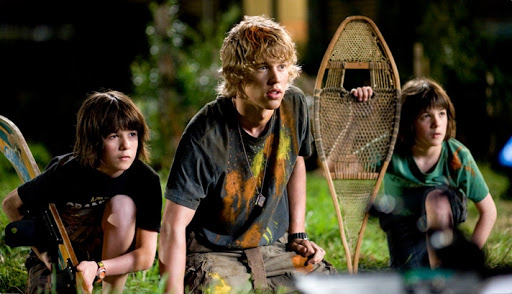
Forgotten early-2000s family shlock, “Aliens in the Attic” doesn’t have a cult following at the moment but deserves one. It follows the Pearson family and their summer vacation going wrong when their young ‘uns discover a force of aliens with mind control devices hiding in their attic.
Our leading man that we feel for the most is Tom Pearson, as he’s not only a kid who faces aliens, he’s also dealing with his older sister Bethany’s diabolical boyfriend Ricky, who is faking that he’s 18- he’s 21. It seems he wants to be more than Bethany’s lover… he wants to be her brother, mother and sister too.
Watch as family vaca chaos ensues with Aliens thrown into the mix. If you wanna see a 21 year old perv get his nuts smashed to smithereens by two boys, a paintball gun, and space tech, “Aliens in the Attic” is for you!
9. Starcrash (1978)
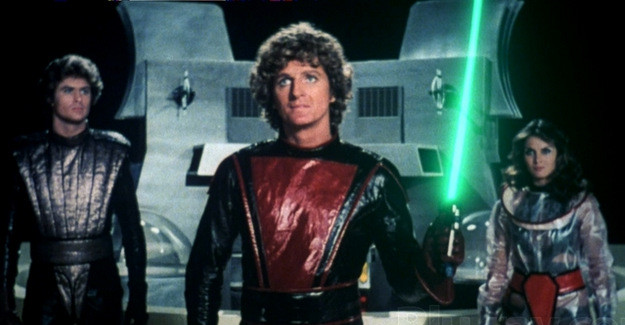
“Starcrash” is a shameless “Star Wars” knock off that’s well loved because of its bikinis and bad effects. These two things are what makes Starcrash a substantial achievement. Plus, David Hasslehoff and Christopher Plummer are in it.
There’s a loveable stop motion giant robot scene, and is so weird it’s visually beautiful. The trashiness of this whole shebang will eventually crashland into a special place in your heart.
10. Gandahar (1987)
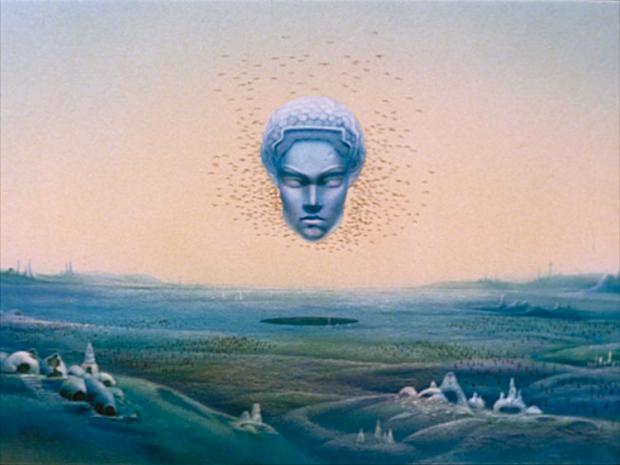
Although many have seen Renee Laloux’s critically acclaimed “La Planète Sauvage”, it seems his latter films are often skipped over. Another Laloux masterpiece (second to “La Planète Sauvage,” of course), enter Gandahar, a utopia with a dark underbelly and soon to be dystopian future.
With blue alien babes and handsome extraterrestrial hunks, “Gandahar” deserves a lot more adoration. Be sure to watch it in french with english subtitles, because the english dubbed cut loses the erotic undercurrents of the script and omits parts of the original score wonderfully composed by Gabriel Yared.
The mix of otherworldly visuals and a hypnotic soundtrack gifts “Gandahar” ethereal feelings throughout. It begins on an extraterrestrial beach. Everything is calm, peaceful. Beautiful blue shaded people and alien animals relax in the sands and water, going about their everyday business- until unknown laserbeams blast out of nowhere, transforming their targets into stone! (Maybe this opening inspired some of 2017’s “Valerian and the City of a Thousand Planet’s” beachy Mul scenes.)
Like “La Planete Sauvage”, “Gandahar” is another sci-fi parable about communication, but this time around the message is more honed in on science’s relationship with the environment. Witness as this perfect planet scientifically spawns a shadow self it must defeat.
Although the Gandaharian community has made great technical strides in creating eco-friendly technology by actually merging their environment with the tech, all this experimentation results in failed outings Gandahar ignores, casting out of sight and mind. As an army of “metal men” ravage the doomed utopia, the audience follows Sylvian, a hero chosen by the Council of Women, to investigate their world’s strange happenings. He allies himself with show-stealer love interest Airelle, and the even more show-stealing mutant race of failed genetic projects known as “The Deformed”, and together they attempt to exterminate the root of their home planet’s problems.
Although some elements of this movie may seem cliche and even cheesy, it works in the film’s favor. Sylvian is definitely the stereotypical hero we’ve seen countless times before, but he’s enjoyable as such. His romance with the lovely Airelle is nowhere near groundbreaking, but still cute and heartwarming nonetheless. As lovers of science fiction we enjoy these “so worn out it’s been smooshed into pulp” tropes, and when done as finely as “Gandahar” it becomes a delicacy, allowing us to focus on the true star of the film: the planet Gandahar itself.
11. Alphaville (1965)
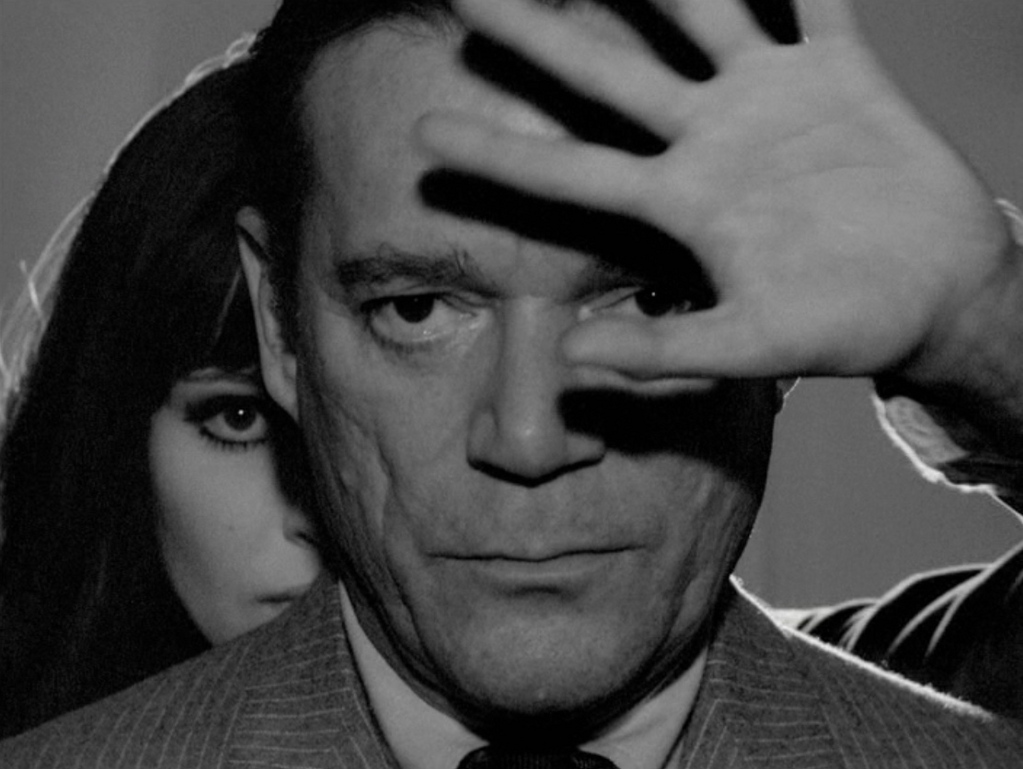
Jean Luc Godard’s often overlooked, meta/artsy/french new wave sci-fi outing is one of the most influential science fiction movies of its time; still overshadowed by its predecessors. “Blade Runner” before “Blade Runner” and “2001” before “2001,” “Alphaville” is, in its own words: “A Strange Adventure of Lemmy Caution”, in which Godard sticks Lemmy Caution (a pulp secret agent character created by writer Peter Cheyney and already played by Eddie Constantine in previous films) is sent on an mission to the dystopian, technologically advanced city Alphaville to find familiar characters Henri Dickson, Dick Tracy, Flash Gordon, all of whom have gone missing, and to destroy the Alpha 60 supercomputer that controls the city by outlawing individuality, emotion, and love.
The Alpha 60 Supercomputer may be HAL of “2001’s” father. Both are advanced AI whose main visual feature consists of a dot in the wall and speak over intercoms. “Alphaville’s” main plot thread may have also laid the groundwork for “Blade Runner” : mysterious detective in shady futuristic town that’s an equal blend of film noir and sci-fi, who must escape the futuristic city with Natacha (Played by the wonderful Anna Karina) so they may experience true love?
Through “Alphaville” Godard explores many ideas, including the relationship between reality and fantasy, how the two intertwine until unrecognizable. His decision to shoot in real locations in Paris that looked futuristic and modernist only add to this meta train of thought.
Godard also explores ideas about the power of language and poetry in a world where expression is forbidden. Caution and Natacha’s musings over poems, love, and life are the movie’s most beautiful moments. When they look past the camera and into your eyes (literally!), you’ll be lost with them.
12. A Visitor to a Museum (1989)
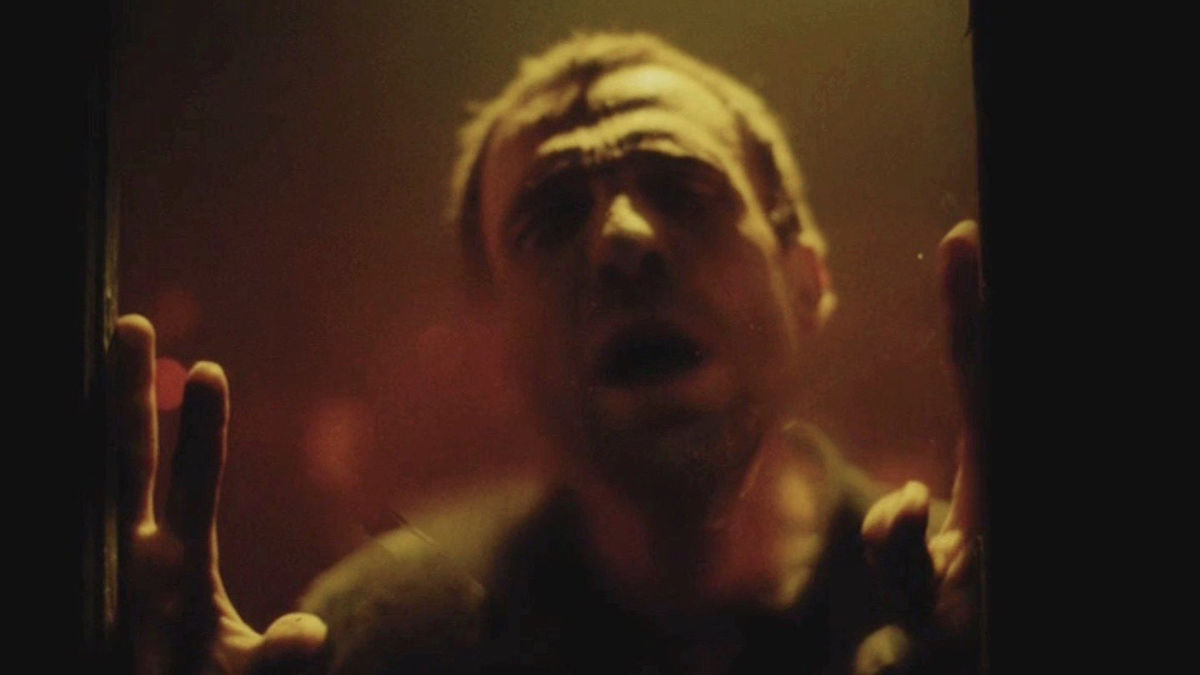
Our man is on a ship- an actual ship that floats on water- not a spaceship. Paranoid, he turns around, almost looking at the camera, and asks, “Who’s there?” As the opening credits fade, we see him trekking across a rocky, polluted landscape; garbage galore. Once again, he looks at the camera. “What do you want from me?” He says.
“A Visitor to a Museum” is a 1989 Soviet post-apocalyptic movie directed by Konstantin Lopushansky. Haunting and atmospheric, aided by color soaked lighting, its images will remain with you as we follow this man’s journey through a ruined world full of mutants, as he tries to visit a mysterious museum that can only be reached during low tides.
13. X: The Man with X-Ray Eyes (1963)
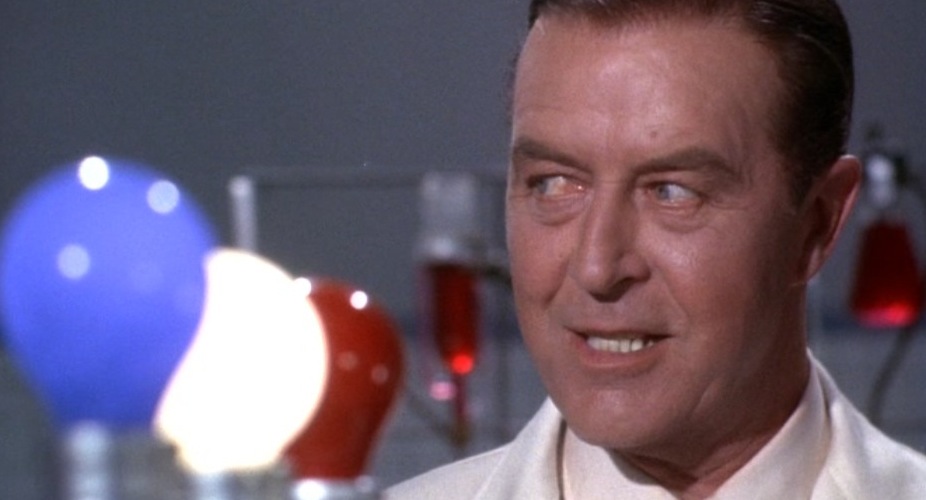
Roger Corman’s “X: The Man with X-Ray Eyes” might just be his masterpiece. A movie that’s part pulp, part Faust and part Shakespheare, X is a nonsensical science-fiction tragedy that follows Dr. James Xavier (played by Ray Milland in one of his most unique roles to date). He wants to see everything, but this obsession goes a little too far, (still gotta respect that) going to where Xavier accidentally throws his scientist friend out the window, killing him. We watch as Dr. X embarks on an unconventional odyssey in which his desire to heal and help as a doctor fades away, overpowered by his thirst for knowledge concerning the capacity of the human eye.
A most fantastic b-movie arthouse combo, the dialogue is 50 percent pulp, 50 percent poetry, perfectly performed by Hollywood Golden Age star Ray Milland. The lines Dr. X rambles when he’s mind-blown by what he sees are haunting. The images and eerie sounds Corman and his team conjure are haunting too. (Of course nicely spliced with some humorous moments.) The opening shot of an eye floating in a steaming glass has pretty much nothing to do with the movie, but it’s so striking it’s perfect! The trippy scenes of cities seen through Dr. Xavier’s extrasensory vision strikes on point as well!
Some of the movie’s most charming moments come from scenes in a carnival, in which the establishing shots of the carnival seem obtained from a real carnival via guerilla filmmaking, and the interior shots within the carnival are from built sets in a studio. The guerilla obtained shots are so melancholy in atmosphere, and although this real life carnival is crowded and full of cheery children, the strange music playing and the blurilly (and most likely in a hurriedly) filmed animatronic dummies make the carnival appear so sad and lonely, dead and rotting. Maybe the audience can suppose the same with Dr. Xavier’s conscience.
14. The Man From Planet X (1951)
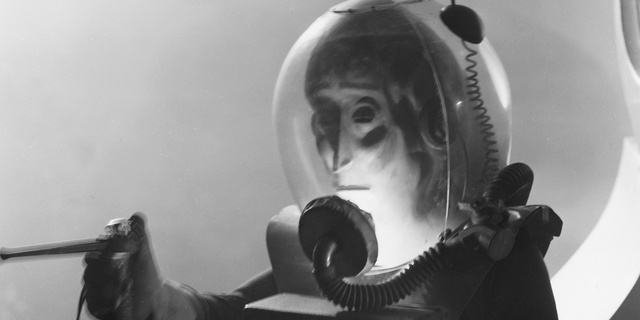
As Planet X nears Earth in orbit, down comes this alien visitor who’s displeased with Scotland’s lack of manners, and decides using his powers to turn humans into drones is a good idea. Of course, humans have to step in to stop him!
Riding off the coattails of the Roswell Incident, “The Man From Planet X” was made in 6 days on leftover sets of 1948’s Joan of Arc. Although the smoky haze permeating the movie was really there to cover up the restraints of the set, it adds a distinct gothic feel.
It’s no surprise “Planet X” is an optical treat, cult director Edgar G Ulmer directed it, and at the helm of “Planet X’s” cinematography was “Metropolis’s” Eugen Schufftan. The alien is the best part, captivating everyone every time he graces the screen. His UFO is cute and classy, his breathing apparatus looks fresh, and he speaks in musical tones. Impossible to hate.
15. Robots (2005)

Sentient robot Rodney Copperbottom strives for his dream job, working as an inventor for Bigweld of BigWeld Industries, but he has to overcome a few forks in the road to make his dreams come true. First of all, he comes from a low income family. Secondly his inventions are a little on the wild side. And the movie’s villain Ratchet has a plan to force all robots to “upgrade” their parts, maximizing BigWeld Industries’ profits. As Rodney tries to make a name for himself in Robot City, he befriends the scrappy Fender, and they go underground to lead a revolution to combat Ratchet’s evil scheme.
It seems everyone sees this movie as an excuse to sell toys. But who wouldn’t want to buy them? The character designs in this movie are great, cool looking while communicating to us their main traits, incorporating elements from all places in robot history. But cool visuals (and not to mention the wildly inventive action scenes) aside, “Robots” tells a great story jam packed with timeless themes for all ages: growing up, old vs new, and the cost of meeting our idols, It’s also hysterical.
For aspiring filmmakers, “Robots” is too relatable. Our cinematic heroes of the past (and even film jobs) seem untouchable. Movies are an art form driven by profit, and while that is necessary, it seems like in this age the focus on profit has tipped off balance by going off the charts. Maybe the artists in all of us will always see the world this way but it seems there’s no space for cult films and low budget oddities to be made anymore.
That’s why we need to pull a Rodney Copperbottom, to fight cinema’s Ratchets, to start a movie revolution. Let’s go underground and invent the movies of our dreams.